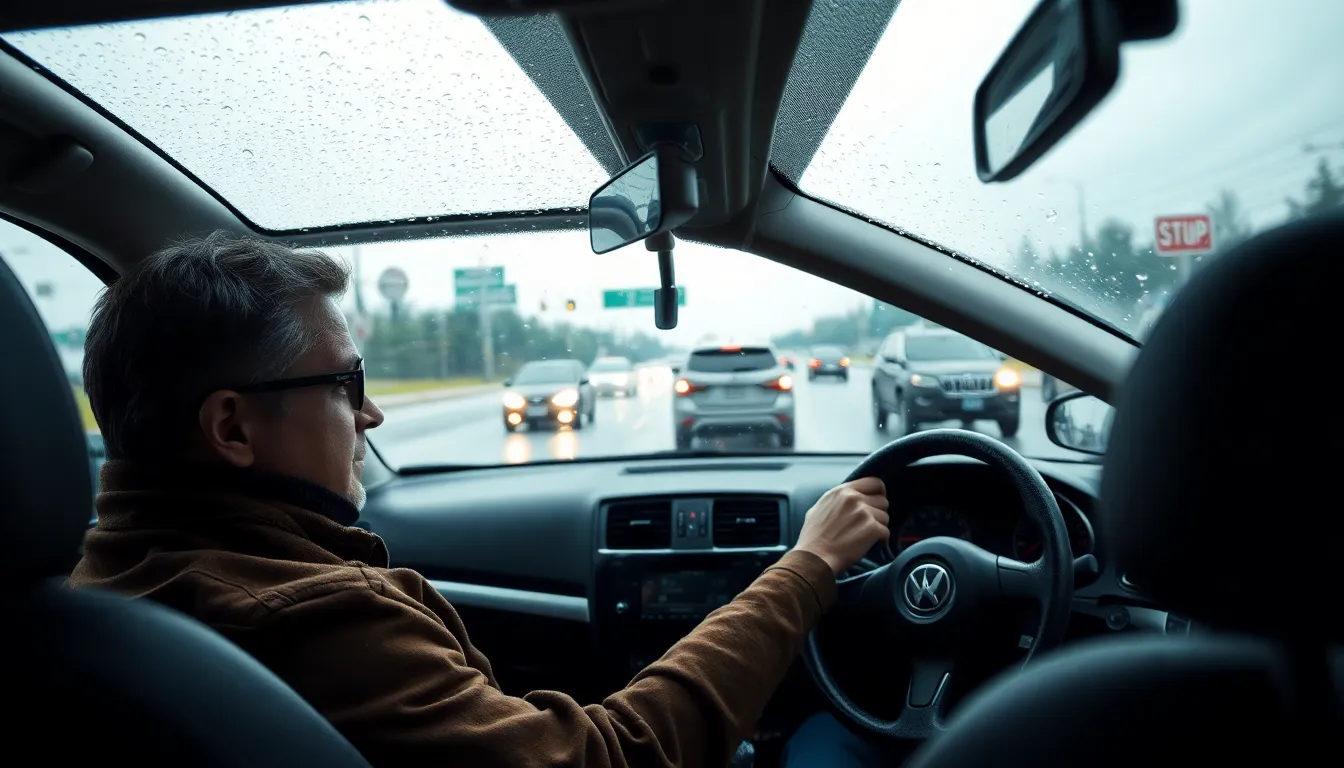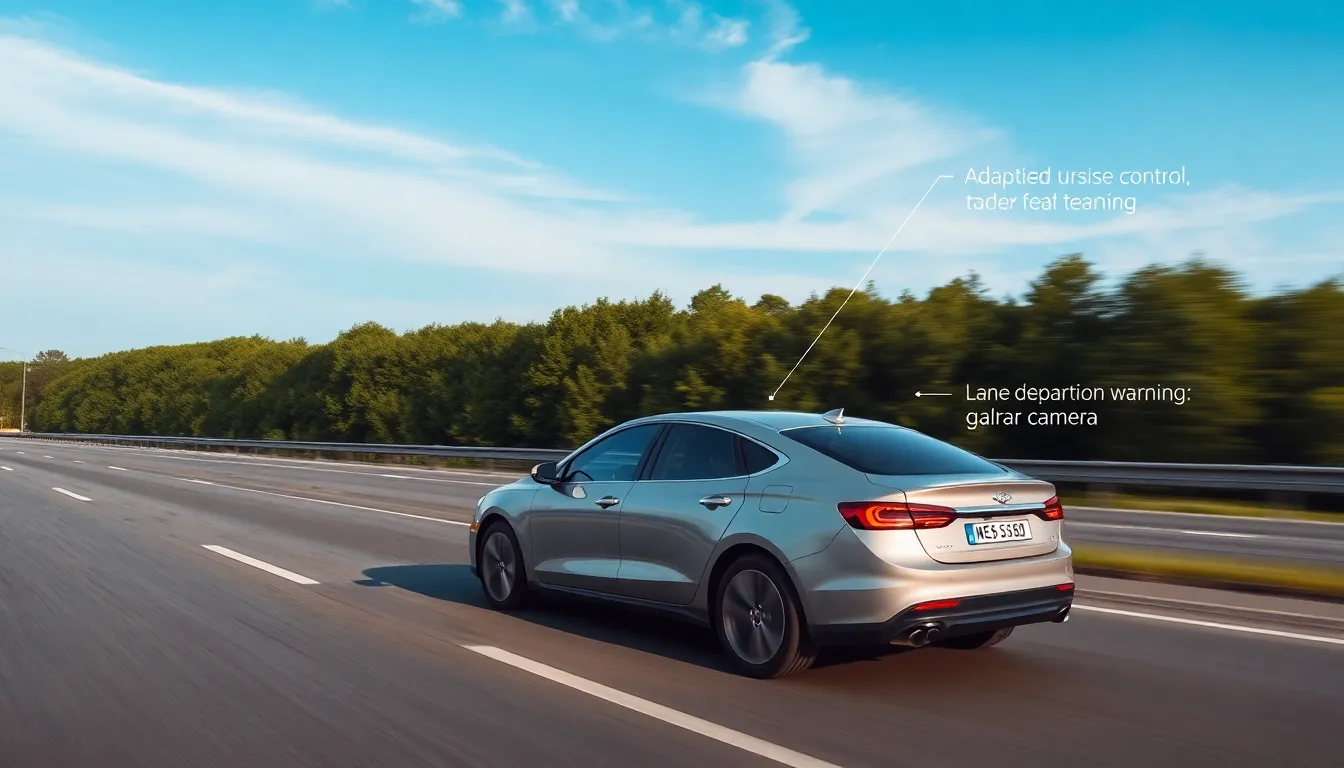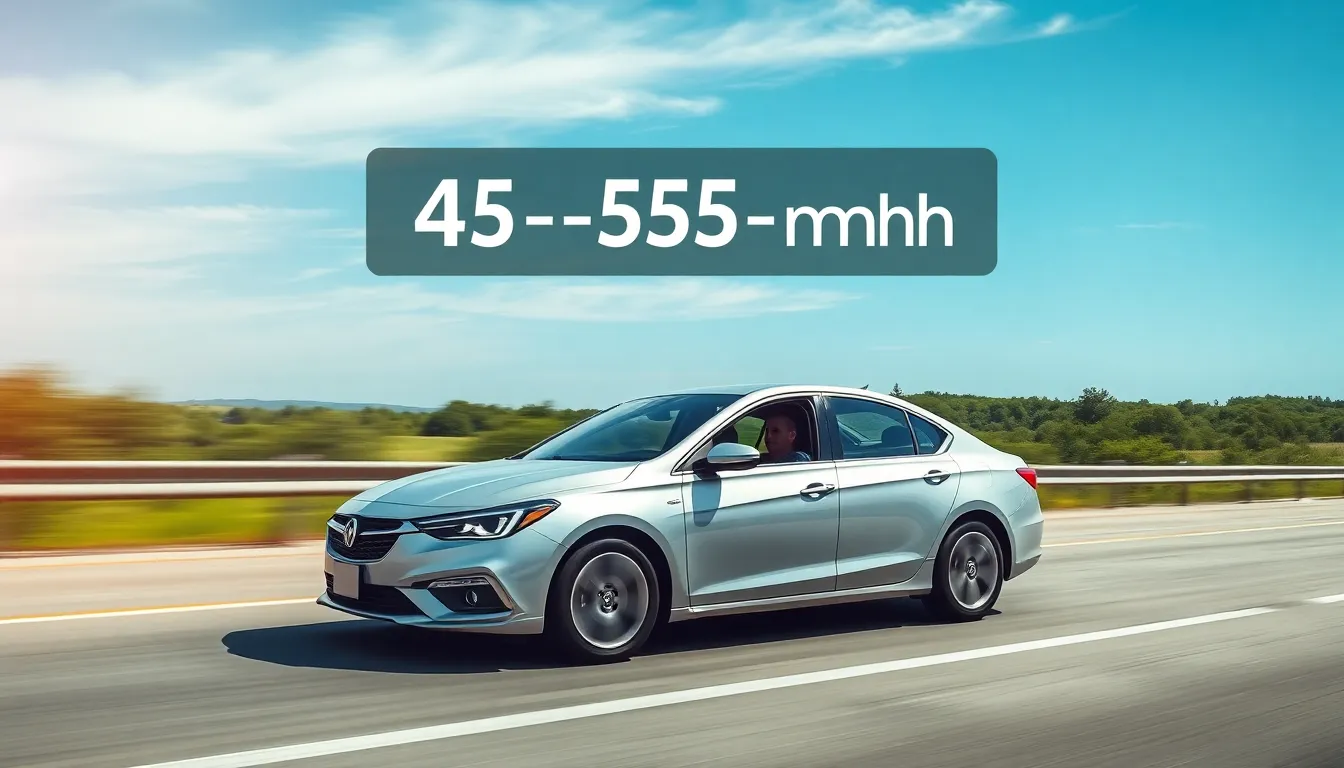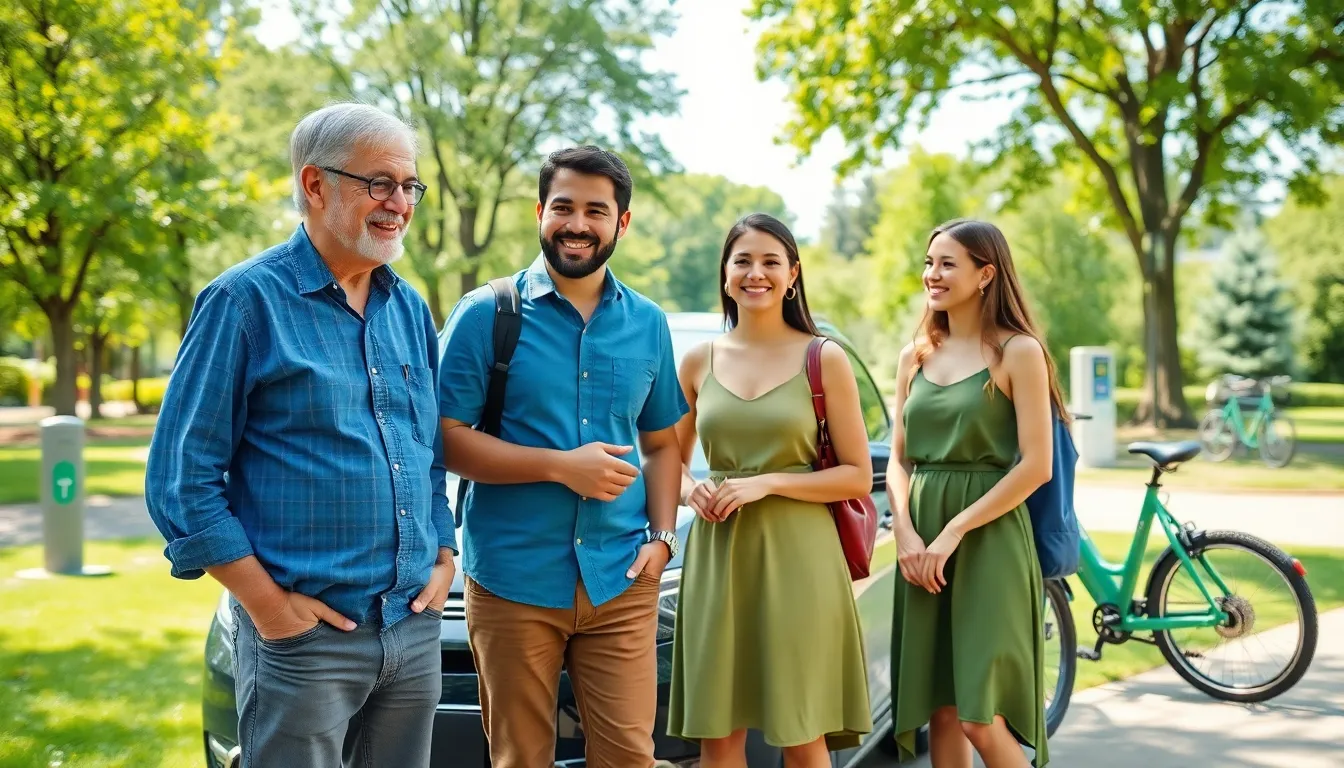We’ve all experienced that moment when we slip behind the wheel and feel the power of modern engineering at our fingertips. Cars have transformed from simple transportation devices into sophisticated machines that respond to our every command while keeping us safe on increasingly complex roadways.
Today’s driving experience involves far more than just pressing the gas pedal and steering. We’re handling through advanced safety systems automated features and ever-evolving traffic patterns that demand both skill and awareness. Whether you’re a seasoned driver or just starting your journey understanding the fundamentals of car operation can make all the difference.
From mastering basic vehicle controls to developing defensive driving techniques we’ll explore everything you need to know about cars and driving. Our comprehensive guide covers essential skills safety protocols and practical tips that’ll help you become a more confident and capable driver on today’s roads.
Essential Skills Every Driver Must Master for Safe Cars Driving
Mastering fundamental driving techniques forms the foundation of safe vehicle operation. These core skills help us maintain control and respond appropriately to various road conditions.
Proper Steering Techniques
Hand positioning at 9 and 3 o’clock provides optimal vehicle control while reducing injury risk during airbag deployment. We position our thumbs on the steering wheel’s outer rim rather than wrapping them around the wheel spokes. This grip allows for better feedback from the road and precise steering adjustments.
Push and pull steering technique delivers smoother turns compared to hand over hand methods. We push up with one hand while simultaneously pulling down with the other to maintain constant contact with the wheel. This approach prevents oversteering and helps us navigate curves with greater stability.
Steering corrections require gentle inputs to maintain vehicle stability. We make small adjustments rather than sudden jerky movements when correcting our lane position. Aggressive steering inputs can cause loss of traction, especially on wet or slippery surfaces.
Effective Braking Methods
Gradual brake application prevents wheel lockup and maintains steering control during emergency situations. We apply steady pressure to the brake pedal rather than jamming it down suddenly. This technique allows the anti-lock braking system to function properly when equipped.
Progressive braking technique helps us stop smoothly in normal driving conditions. We begin with light pressure approximately 200 feet before our intended stopping point, then gradually increase pressure as we approach. This method reduces wear on brake components and provides passenger comfort.
Emergency braking requires firm, sustained pressure on modern vehicles with ABS systems. We press the brake pedal hard and hold it down while steering around obstacles if necessary. The ABS will prevent wheel lockup while maintaining our ability to steer during hard braking situations.
Smooth Acceleration Control
Gentle throttle inputs improve fuel efficiency and reduce drivetrain wear in everyday driving. We apply gradual pressure to the accelerator pedal to reach desired speeds smoothly. Sudden acceleration wastes fuel and can cause loss of traction, particularly in adverse weather conditions.
Merging acceleration requires decisive throttle application to match highway traffic speeds safely. We use approximately 75% throttle pressure to reach merging speed quickly while monitoring surrounding traffic. Hesitant acceleration during merging creates dangerous speed differentials with other vehicles.
Hill climbing techniques prevent rollback on inclined surfaces with manual transmissions. We coordinate clutch release with accelerator application to maintain forward momentum. For automatic transmissions, we avoid excessive throttle that can cause transmission hunting between gears.
Advanced Cars Driving Techniques for Different Road Conditions

Challenging road conditions demand specialized driving approaches that go beyond basic vehicle control. We’ll explore proven strategies that help drivers maintain safety and confidence when weather and visibility create additional hazards.
Wet Weather Driving Strategies
Reduce your speed by 5-10 mph below the posted limit when rain begins to fall. Wet pavement reduces tire traction by up to 30%, making sudden movements dangerous and unpredictable.
Increase following distance to 4-6 seconds behind the vehicle ahead of you. This extended buffer zone gives you more time to react when visibility decreases and stopping distances increase on slippery surfaces.
Avoid sudden steering inputs that can cause your vehicle to hydroplane or lose control. Gentle movements help maintain tire contact with the road surface and prevent skidding incidents.
Turn on your headlights even during light rain to improve your visibility to other drivers. Most states require headlight use whenever windshield wipers are active.
Test your brakes gently after driving through puddles to remove water buildup that can reduce braking effectiveness. Light brake applications help restore normal stopping power quickly.
Snow and Ice Navigation
Install winter tires when temperatures consistently drop below 45°F for optimal traction and control. These specialized tires use rubber compounds that remain flexible in cold conditions.
Accelerate gradually from stops to prevent wheel spin that can leave you stuck or sliding sideways. Smooth throttle application helps maintain forward momentum without losing control.
Brake earlier and more gently than you would on dry pavement since stopping distances can triple on icy surfaces. Pumping your brakes in non-ABS vehicles helps prevent wheel lockup.
Steer into skids by turning your wheels in the direction you want the front of your car to go. This technique helps regain control when your vehicle begins sliding sideways.
Clear all snow from your vehicle’s windows, lights, and roof before driving to maintain visibility and prevent snow from flying onto other vehicles.
Night Driving Best Practices
Adjust your headlights properly to illuminate the road without blinding oncoming drivers. Misaligned headlights reduce your visibility by up to 40% and create dangerous situations.
Use high beams appropriately on rural roads and highways when no other vehicles are present. High beams can illuminate objects 350-400 feet ahead compared to 160 feet with low beams.
Keep your windshield clean inside and out to minimize glare from oncoming headlights. Dirty glass can scatter light and significantly reduce nighttime visibility.
Reduce your speed since your effective vision range decreases dramatically after sunset. Most drivers can’t see pedestrians or obstacles until they’re within 125 feet using standard headlights.
Take regular breaks during long nighttime drives as fatigue impairs reaction time and decision-making abilities. Stop every 2 hours or 100 miles to rest and refocus your attention.
Technology That Enhances Modern Cars Driving Experience

Today’s vehicles integrate sophisticated technologies that transform how we experience the road. These advanced systems work seamlessly together to create safer, more comfortable, and more efficient driving experiences.
Adaptive Cruise Control Systems
Adaptive cruise control systems automatically adjust your vehicle’s speed to maintain a safe following distance from the car ahead. These intelligent systems use radar sensors and cameras to monitor traffic flow ahead of you. When the system detects slower traffic, it gradually reduces your speed without requiring manual brake application.
Maintaining consistent highway speeds becomes effortless with adaptive cruise control technology. The system accelerates back to your preset speed once the road clears ahead. Most modern versions can bring your vehicle to a complete stop in stop and go traffic situations.
Setting your preferred following distance is typically accomplished through steering wheel controls or dashboard buttons. We can choose from multiple distance settings ranging from close to far depending on driving conditions. The system displays visual indicators on your dashboard showing the detected vehicle ahead and current following distance.
Benefits include reduced driver fatigue during long highway journeys and improved fuel efficiency through consistent speed management. Studies show adaptive cruise control can improve highway fuel economy by up to 7% compared to manual speed control.
Lane Departure Warning Features
Lane departure warning systems monitor your vehicle’s position within lane markings using forward facing cameras. These cameras continuously scan road markings and alert you when your vehicle begins drifting out of its lane without signaling. The system typically provides audio alerts, visual dashboard warnings, or steering wheel vibrations.
Activating automatically at speeds above 35 mph, these systems help prevent unintentional lane changes. We receive alerts only when the system detects lane departure without turn signal activation. This prevents false alarms during intentional lane changes or highway merging.
Advanced versions include lane keeping assist that provides gentle steering corrections to guide your vehicle back into the proper lane. The steering assistance feels subtle and allows you to easily override the system when needed. Some systems can even provide brief automatic steering input to help center your vehicle in the lane.
Effectiveness increases significantly on highways with clear lane markings compared to city streets or construction zones. Research indicates lane departure warning systems reduce single vehicle run off road crashes by approximately 11% and reduce injuries in these crashes by 21%.
Automatic Emergency Braking
Automatic emergency braking systems detect potential collisions and apply the brakes when you don’t respond quickly enough. These systems use radar, cameras, or laser sensors to continuously monitor the road ahead for vehicles, pedestrians, or obstacles. When a collision appears imminent, the system provides warnings first, then applies emergency braking if needed.
Functioning at various speeds, these systems offer different levels of protection depending on your vehicle’s capabilities. Low speed systems typically operate between 5 to 25 mph and can prevent parking lot collisions or rear end crashes in stop and go traffic. High speed systems work at highway speeds and can significantly reduce crash severity even when complete collision avoidance isn’t possible.
Pedestrian detection capabilities in modern automatic emergency braking systems can identify people crossing streets or walking near roadways. The most advanced systems can detect cyclists, motorcyclists, and even large animals in some cases. These systems prove especially valuable in urban environments where pedestrian traffic is heavy.
Performance data shows automatic emergency braking reduces rear end collisions by 43% and cuts rear end crashes with injuries by 41%. We see the greatest benefits in preventing crashes at speeds below 25 mph where the system can often bring vehicles to a complete stop before impact.
Fuel-Efficient Cars Driving Habits That Save Money

Modern drivers can significantly reduce fuel costs through strategic driving habits that optimize engine efficiency. We’ve compiled proven techniques that transform everyday driving into substantial savings at the pump.
Optimal Speed Maintenance
Maintaining speeds between 45-55 mph maximizes fuel efficiency for most vehicles, as engines operate in their optimal power band within this range. Highway speeds above 65 mph can decrease fuel economy by up to 23%, according to the U.S. Department of Energy. We recommend using cruise control on flat highways to maintain consistent speeds and prevent unnecessary acceleration cycles.
Gradual acceleration from stops improves fuel consumption by allowing engines to reach efficient operating temperatures smoothly. Aggressive starts can waste up to 40% more fuel than gentle acceleration, particularly in city driving conditions. Anticipating traffic flow helps us maintain steady speeds rather than constantly braking and accelerating through congestion.
Engine RPM monitoring through dashboard gauges reveals optimal shift points for manual transmissions and efficient operating ranges for automatics. Keeping RPMs below 2,500 during normal driving conditions typically delivers the best fuel economy for gasoline engines.
Strategic Route Planning
Planning routes during off peak hours reduces idle time in traffic, which can consume up to one gallon per hour while stationary. We suggest using navigation apps that provide real time traffic updates to avoid congested areas and construction zones. Morning commutes between 6:30-8:30 AM and evening rushes from 4:30-6:30 PM typically show the heaviest traffic patterns in urban areas.
Combining multiple errands into single trips eliminates cold engine starts, which consume 12-15% more fuel than warm engine operation. Short trips under three miles prevent engines from reaching optimal operating temperatures, reducing overall efficiency. Batch scheduling appointments and shopping runs maximizes each trip’s fuel efficiency.
Highway routes often provide better fuel economy than city streets, even though longer distances, due to consistent speeds and fewer stops. Interstate highways with minimal elevation changes and steady 55-65 mph speeds typically deliver 15-20% better mileage than stop and go urban driving.
Proper Vehicle Maintenance
Regular oil changes every 3,000-5,000 miles maintain engine efficiency by reducing friction and heat buildup in critical components. Clean oil allows engines to operate smoothly, improving fuel economy by 1-2% compared to dirty or degraded lubricants. We recommend checking oil levels monthly and using manufacturer specified viscosity grades.
Tire pressure maintenance at recommended PSI levels reduces rolling resistance and improves fuel efficiency by up to 3%. Under inflated tires create additional drag that forces engines to work harder, particularly during highway driving. Monthly pressure checks using accurate gauges ensure optimal performance and prevent premature tire wear.
Air filter replacement every 12,000-15,000 miles allows engines to breathe efficiently and maintain proper air fuel ratios. Clogged filters restrict airflow, causing engines to run rich and consume excess fuel during acceleration and climbing. Clean filters support optimal combustion and can improve fuel economy by 6-11% in older vehicles with carbureted engines.
Defensive Cars Driving Strategies to Avoid Accidents

Building on these foundational skills and technologies, we’ll explore exact defensive driving strategies that significantly reduce accident risks. These proactive approaches help us anticipate potential hazards before they become dangerous situations.
Maintaining Safe Following Distances
Following distance calculations vary based on speed and road conditions, with the three-second rule serving as our baseline measurement. We count “one thousand one, one thousand two, one thousand three” after the vehicle ahead passes a fixed object like a sign or bridge. Weather conditions require us to double this distance during rain and triple it on snow or ice.
Speed adjustments become crucial when traffic density increases or visibility decreases. We reduce our speed by 5-10 mph below the limit during heavy rain to maintain proper stopping distance. Modern vehicles with automatic emergency braking still require adequate space to function effectively.
Buffer zones around our vehicle create multiple escape routes during emergency situations. We maintain extra space on all sides when possible, positioning ourselves away from aggressive drivers and large trucks. Construction zones demand increased following distances due to sudden lane changes and worker activity.
Anticipating Other Drivers’ Actions
Behavioral cues from surrounding vehicles often telegraph their next moves before turn signals activate. We watch for subtle steering wheel movements, brake light patterns, and vehicle positioning that indicate lane changes or turns. Drivers who frequently check mirrors or lean forward typically prepare for maneuvers.
Traffic pattern recognition helps us predict congestion points and potential conflict zones ahead. We observe brake lights cascading backward through traffic, indicating slowdowns or accidents further ahead. Merging areas, construction zones, and school zones require heightened awareness of unpredictable driver behavior.
Scanning techniques involve checking mirrors every 5-8 seconds and sweeping our eyes across the entire driving environment. We identify pedestrians at crosswalks, cyclists in bike lanes, and motorcycles that may be hidden in blind spots. Emergency vehicles approaching from any direction require immediate route planning for safe yielding.
Proper Mirror Usage and Blind Spot Awareness
Mirror adjustment procedures ensure optimal visibility coverage around our vehicle before starting any journey. We position the rearview mirror to frame the entire rear window and adjust side mirrors to minimize blind spots. The horizon line should appear in the middle of each side mirror for proper angle alignment.
Blind spot monitoring combines mirror usage with physical head checks during lane changes and merging maneuvers. We turn our heads to visually confirm clear space in areas mirrors cannot cover, particularly for motorcycles and smaller vehicles. Modern blind spot warning systems supplement but never replace these physical checks.
Systematic checking patterns create consistent habits that catch potential hazards before they create problems. We check mirrors before braking, changing lanes, or making turns to identify following vehicles and their proximity. Parking situations require careful mirror usage combined with backup cameras to avoid pedestrians and objects.
Environmental Impact of Cars Driving and Sustainable Alternatives

Modern cars driving significantly impacts our planet’s health through greenhouse gas emissions and resource consumption. We can transform our approach to transportation by adopting sustainable practices and alternative mobility answers.
Carbon Footprint Reduction Techniques
Optimize our driving habits to dramatically reduce emissions without purchasing new vehicles. We’ll achieve 10-15% fuel savings by maintaining steady speeds between 45-55 mph and avoiding aggressive acceleration.
Carry out eco-friendly maintenance practices that enhance engine efficiency and reduce environmental impact. Regular oil changes using synthetic oil extend intervals to 7,500-10,000 miles while improving fuel economy by 2-3%. We should check tire pressure monthly since properly inflated tires improve gas mileage by up to 3% and reduce tire wear.
Plan efficient routes using GPS navigation apps that account for real-time traffic conditions. Combining multiple errands into single trips reduces cold engine starts, which consume 12% more fuel during the first five miles. We can minimize idle time by turning off engines during stops longer than 30 seconds.
Choose fuel-efficient vehicles when replacing existing cars to maximize long-term environmental benefits. Hybrid vehicles achieve 40-50 mpg in city driving compared to 25-30 mpg for conventional cars. Selecting vehicles with better aerodynamics and lighter weight reduces drag and improves overall efficiency.
Electric Vehicle Benefits
Electric vehicles eliminate tailpipe emissions entirely, contributing zero direct air pollutants during operation. We’re witnessing a 60% reduction in greenhouse gas emissions when charging from renewable energy sources compared to gasoline vehicles.
Operating costs favor electric vehicles through significantly lower fuel and maintenance expenses. Electricity costs approximately $0.10 per equivalent gallon compared to $3.50 for gasoline, saving drivers $1,000-2,000 annually. Electric motors require minimal maintenance with no oil changes, spark plugs, or transmission repairs needed.
Charging infrastructure continues expanding rapidly across urban and rural areas. We now have access to over 140,000 public charging stations nationwide, with Level 3 fast chargers adding 200 miles of range in 15-30 minutes. Home charging stations provide convenience and cost savings when installed with solar panels.
Battery technology improvements extend driving ranges and reduce replacement costs. Modern electric vehicles achieve 250-400 mile ranges on single charges, eliminating range anxiety for most drivers. Battery warranties typically cover 8 years or 100,000 miles, providing long-term reliability assurance.
Carpooling and Public Transportation Options
Carpooling reduces individual carbon footprints by sharing transportation resources among multiple passengers. We can decrease emissions by 45% per person when four people share one vehicle instead of driving separately. Rideshare apps connect commuters with similar routes, making carpooling more accessible and convenient.
Public transportation systems offer the most environmentally efficient way to move large numbers of people. Buses emit 33% fewer greenhouse gases per passenger mile compared to private vehicles, while trains produce 76% lower emissions. We benefit from reduced traffic congestion and parking demands when more people choose public transit.
Bike-sharing programs provide zero-emission alternatives for short-distance trips under five miles. Electric bike options extend range capabilities while maintaining environmental benefits and improving accessibility for riders of varying fitness levels. We can replace 20-30% of car trips with bicycle transportation in urban areas.
Multi-modal transportation strategies combine different sustainable options for optimal efficiency. Walking to transit stops, using public transportation for long distances, and completing final segments with shared mobility services creates comprehensive low-carbon travel answers. We achieve maximum environmental benefits by matching transportation modes to exact trip requirements.
Legal Requirements and Regulations for Cars Driving

Handling the legal industry of driving requires understanding fundamental requirements that keep us compliant and protected on public roads. These regulations form the backbone of safe driving practices we’ve explored throughout our comprehensive guide.
License and Registration Compliance
Getting your driver’s license starts with meeting age requirements that vary by state, typically ranging from 14 to 18 years old depending on license type. We must pass both written knowledge tests covering traffic laws and practical driving examinations demonstrating our road skills.
Maintaining valid registration keeps our vehicles legally authorized for public road use. Registration renewals occur annually or biennially depending on state requirements, with fees ranging from $25 to $200 across different jurisdictions.
Required documentation includes proof of identity, residency verification, and vehicle ownership when applying for licenses or registrations. We should carry our physical license, registration certificate, and insurance proof while driving to avoid potential citations.
Commercial driving licenses demand additional testing and medical certifications for operating vehicles over 26,000 pounds or transporting hazardous materials. These specialized licenses require regular renewals every 4 to 8 years with ongoing medical evaluations.
Insurance Coverage Essentials
Minimum liability coverage protects other drivers and property in accidents we cause, with requirements varying significantly by state. Most states mandate bodily injury limits between $15,000 to $50,000 per person and property damage coverage from $5,000 to $25,000.
Comprehensive and collision coverage protects our own vehicles from theft, weather damage, and accident repairs. While not legally required, lenders typically mandate these coverages for financed vehicles until loans are fully paid.
Uninsured motorist protection safeguards us against drivers lacking adequate insurance, covering medical expenses and vehicle damage. Approximately 13% of drivers operate without insurance nationwide, making this coverage increasingly valuable.
Proof of insurance must remain accessible in our vehicles at all times, either as physical cards or approved mobile apps. Citations for lacking proof can result in fines ranging from $50 to $1,000 depending on state penalties.
Traffic Law Adherence
Speed limit compliance requires adjusting our driving to posted limits and current road conditions. Speed limits vary from 25 mph in school zones to 85 mph on certain Texas highways, with penalties escalating based on violation severity.
Right of way rules determine who proceeds first at intersections, crosswalks, and merge points. We must yield to pedestrians in crosswalks, emergency vehicles with active sirens, and vehicles already established in traffic circles.
Signal and lane usage mandates proper turn signal activation at least 100 feet before turns in most states. Lane changes require checking mirrors, signaling intentions, and ensuring adequate space before maneuvering.
Distracted driving laws prohibit texting, calling without hands-free devices, and other activities that divert attention from driving. Violations can result in fines exceeding $500 and license points that increase insurance premiums significantly.
Conclusion
We’ve covered the essential elements that make up responsible and effective driving in today’s industry. From mastering basic techniques to embracing advanced safety technologies our goal is to help you become a more confident driver while reducing your environmental impact.
The road ahead continues to evolve with new technologies and changing regulations but the fundamentals remain constant: safety comes first fuel efficiency saves money and defensive driving protects everyone. By combining traditional skills with modern innovations we can all contribute to safer more sustainable transportation.
Remember that becoming an excellent driver is an ongoing journey. Stay informed about new developments practice regularly and always prioritize the safety of yourself and others on the road.
Frequently Asked Questions
What are the most essential driving skills every driver must master?
The three most essential driving skills are proper steering techniques, effective braking methods, and smooth acceleration control. Maintain optimal hand positioning on the steering wheel at 9 and 3 o’clock for better control. Use gradual brake application to prevent wheel lockup and apply gentle throttle inputs to improve fuel efficiency and vehicle smoothness.
How should I adjust my driving technique for wet weather conditions?
For wet weather driving, reduce your speed and increase following distance significantly. Avoid sudden steering inputs, braking, or acceleration to maintain traction. Use gentle movements and allow extra time for all maneuvers. Keep your windshield clean and ensure your wipers are in good condition for optimal visibility.
What advanced safety technologies are available in modern vehicles?
Modern vehicles feature adaptive cruise control that maintains safe following distances, lane departure warning systems that alert you when drifting, and automatic emergency braking that detects potential collisions. These technologies work together to reduce driver fatigue, prevent accidents, and enhance overall safety, especially in urban driving environments.
How can I improve my vehicle’s fuel efficiency through driving habits?
Maintain optimal speeds between 45-55 mph for maximum fuel efficiency and use cruise control on highways. Practice gradual acceleration from stops, anticipate traffic flow, and plan strategic routes to minimize idle time. Combine multiple errands into single trips and maintain steady speeds to reduce fuel consumption.
What defensive driving strategies help reduce accident risks?
Follow the three-second rule for safe following distances and adjust based on weather conditions. Maintain buffer zones around your vehicle to create escape routes. Regularly scan mirrors, check blind spots, and anticipate other drivers’ actions by observing behavioral cues and traffic patterns for enhanced safety.
How can driving practices reduce environmental impact?
Reduce your carbon footprint by maintaining steady speeds, practicing eco-friendly maintenance, and considering electric vehicles for zero tailpipe emissions. Use carpooling and public transportation when possible, as sharing rides significantly reduces individual emissions. Consider bike-sharing programs for short-distance travel.
What are the basic legal requirements for driving?
You must obtain a valid driver’s license, maintain current vehicle registration, and carry proof of insurance. Comply with traffic laws including speed limits, right-of-way rules, and regulations against distracted driving. Keep all documentation current and readily available while driving to ensure legal compliance.
How do I drive safely on snow and ice?
Use winter tires for better traction and accelerate gradually to avoid wheel spin. If you start to skid, steer into the direction of the skid to regain control. Increase following distances significantly and avoid sudden movements. Allow extra time for all maneuvers and consider staying off roads during severe conditions.
What techniques improve night driving safety?
Adjust headlights properly and maintain a clean windshield for optimal visibility. Reduce speed to account for limited visibility and take regular breaks to combat fatigue. Use high beams appropriately when no oncoming traffic is present, and ensure all vehicle lights are functioning correctly before driving at night.

